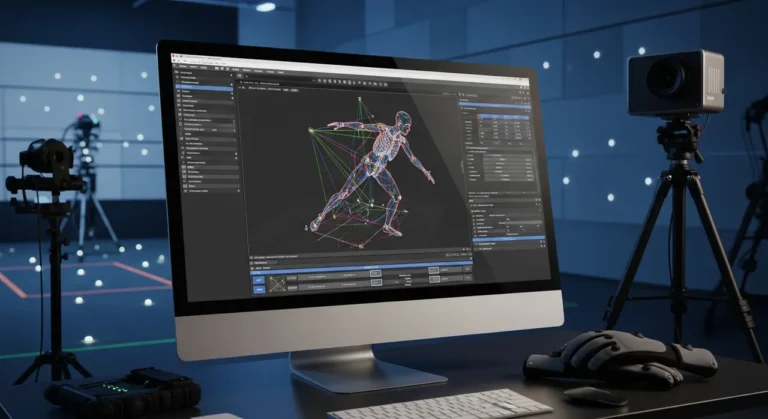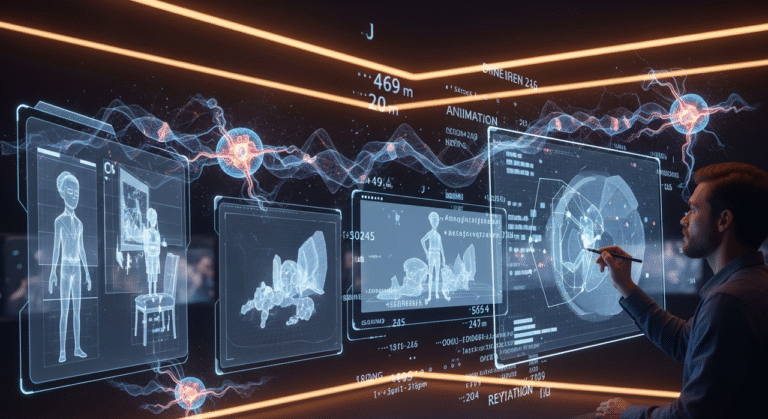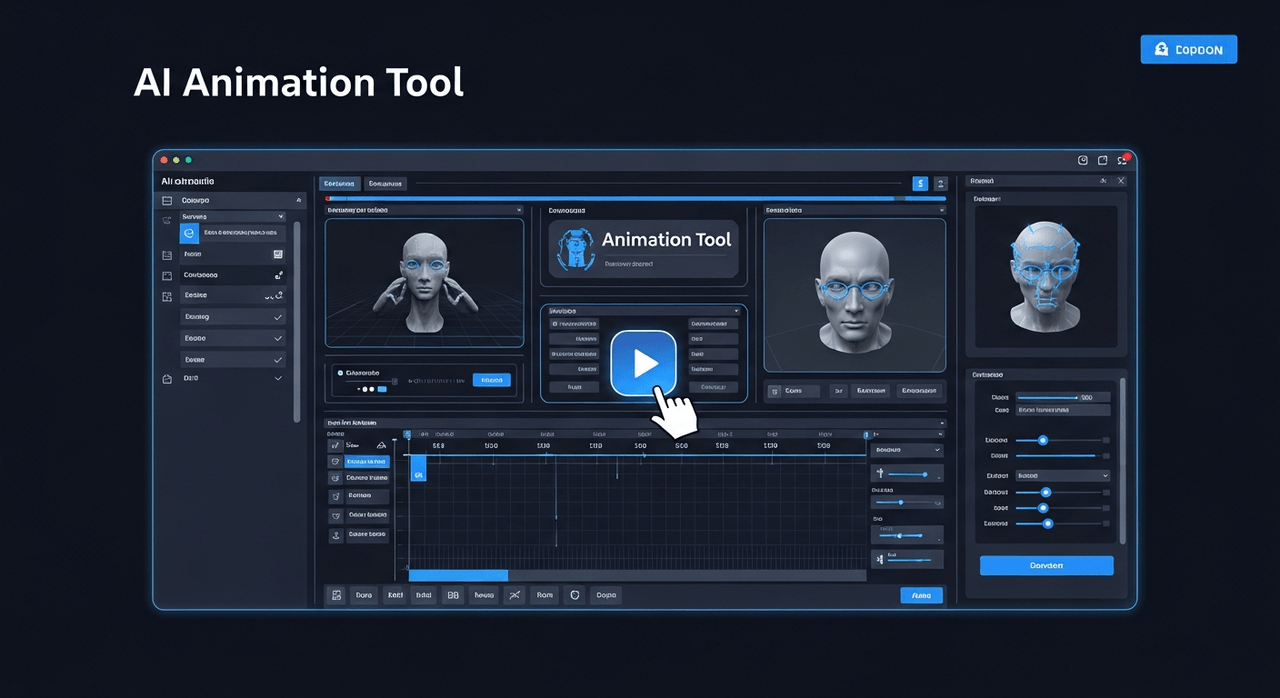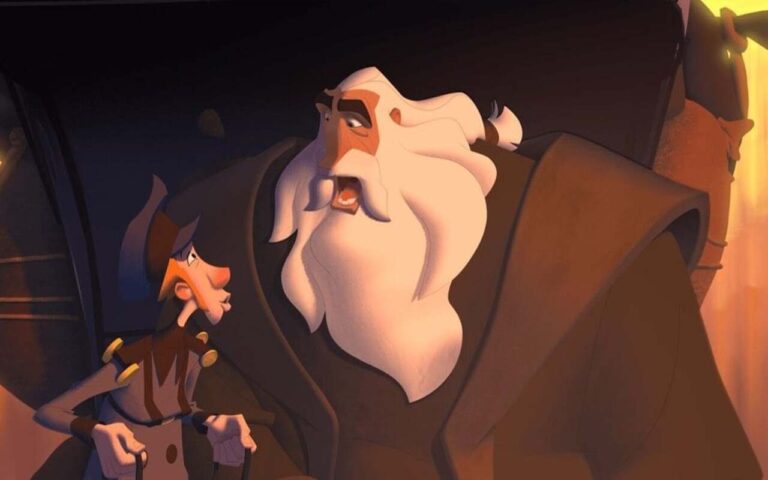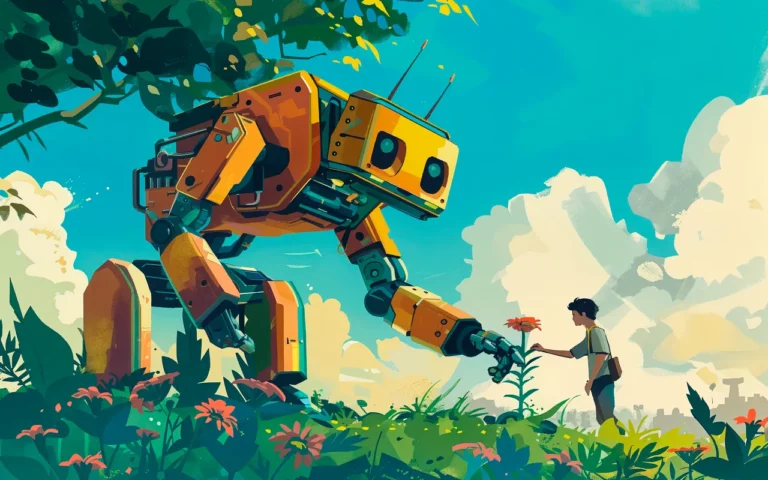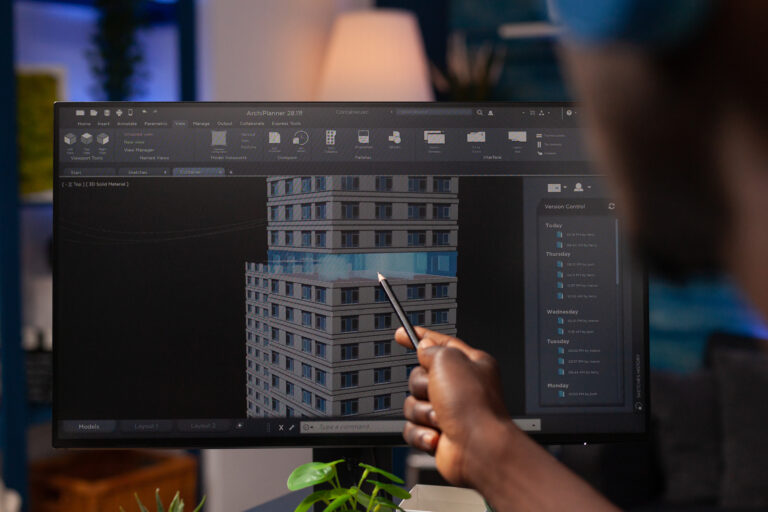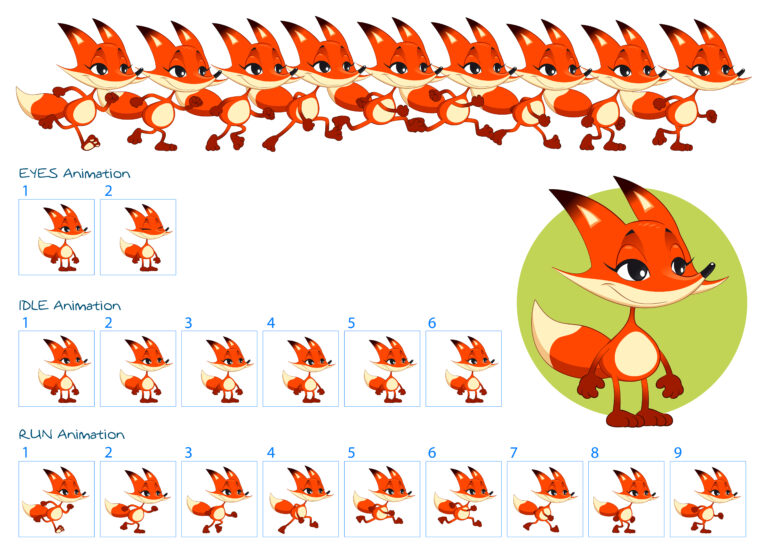At the core of game design, animation, and digital artistry lies 3D modeling: a creative force that shapes everything from vibrant characters to immersive virtual worlds.
The techniques behind these creations not only define their visual appeal but also ensure they run smoothly in real-time engines like Unity and Unreal.
Whether you’re a newcomer or a seasoned pro, knowing the key 3D modeling methods unlocks the perfect workflow for your project.
So, what are some of the best techniques used by every top-notch 3D modeling studio for creating precise and high-quality 3D models? In this guide, we will discuss the most popular 3D modeling techniques, their strengths, and how they bring games and animations to life.
What is 3D Modeling?
3D modeling transforms imagination into digital reality, crafting objects with depth, volume, and detail using 3D modeling tools like Blender, Maya, or 3ds Max.
By shaping vertices, edges, and polygons, artists define the form and texture of everything from characters to gaming landscapes.
Different projects require tailored techniques: realistic game characters often blend intricate sculpting with streamlined retopology, while expansive environments frequently rely on procedural or modular methods for efficiency and optimization.
As you know, a 3D model can be the final product of a 3D animation pipeline. Mastering these approaches is key to creating assets that shine in animations, renderings, or fast-paced, real-time gameplay.
What is Box Modeling?
Box modeling starts with a humble geometric shape, often a cube, and transforms it through careful subdivisions, extrusions, and edge loops.
Artists sculpt the mesh, tweaking vertices and edges until the desired form emerges. It’s a go-to method for crafting hard-surface assets like vehicles, weapons, or buildings, where precise edge flow is essential.
Perfect for beginners, this technique builds a strong foundation in topology basics, offering a straightforward, step-by-step process that ensures clean geometry, ready to deform smoothly in animations.
- Pros: Precise, efficient, great for clean topology.
- Cons: Less intuitive for organic shapes.
What is Polygon Modeling?
Polygon modeling harnesses quads and triangles as the foundation for building intricate 3D forms.
By tweaking vertices and faces, artists gain pinpoint control over an object’s shape and surface. A cornerstone of game development, this technique balances detail with performance, as polygon counts directly affect how smoothly assets run in engines like Unity or Unreal.
Ideal for characters, props, and environments, it integrates seamlessly with UV mapping and texturing, making it a vital tool for both blockbuster AAA games and creative indie game art projects.
- Pros: Flexible for detailed hard surfaces.
- Cons: Time-intensive for complex organic forms.
What Is NURBS and Curve Modeling?
NURBS (Non-Uniform Rational B-Splines) and curve modeling use mathematical curves to craft sleek, flowing surfaces defined by control points.
Unlike polygon-based methods, these resolution-independent models can be endlessly refined, making them ideal for precision-driven designs such as cars, aircraft, or product prototypes.
While less common for organic shapes in animation, NURBS shine in engineering and high-end visual effects workflows. Their unmatched accuracy and flexibility make them ideal when flawless curvature trumps polygon efficiency.
What is Digital 3D Sculpting?
Digital 3D sculpting brings the tactile joy of shaping clay into the virtual world. Using tools like ZBrush or Blender’s Sculpt Mode, artists mold, stretch, and refine digital material to create richly detailed characters, creatures, and organic forms.
Perfect for adding intricate touches like wrinkles, pores, or fabric textures, these high-poly creations are often baked into normal maps for efficiency.
Since sculpted meshes can balloon to millions of polygons, retopology is key to making them game-ready. This technique is a cornerstone for stunning realism and expressive artistry in cinematic animations and character design.
- Pros: Intuitive, great for organic details.
- Cons: High polycounts need retopology.
What Is Photogrammetry?
Photogrammetry transforms real-world photos into detailed 3D models by weaving multiple images into a textured mesh. Using a camera, we picture an object numerous times while using this technique, trying to make sure the lighting is as even as possible. We then input these photos into software, which decodes them and creates a 3D model of the thing.
Using tools like RealityCapture or Agisoft Metashape, artists can swiftly capture lifelike assets like rocks, trees, or buildings for game environments.
While the results are strikingly photorealistic, these models often require optimization to reduce polygon counts and texture sizes for smooth engine performance.
This technique seamlessly blends the physical and digital, saving time while delivering breathtakingly realistic detail.
- Pros: Realistic, time-saving for textures.
- Cons: Requires physical objects and cleanup.
What Is Simulation-Based Modeling?
Simulation-based modeling harnesses the power of physics and clever algorithms to craft incredibly realistic elements, like flowing cloth, swirling fluids, or swaying hair.
Rather than painstakingly sculpting every detail by hand, artists let simulations run their course, capturing natural movements and then baking them into static or animated meshes.
Think of Marvelous Designer breathing life into draping costumes or fluid sims conjuring mesmerizing water effects; these tools make the impossible feel utterly real.
They’re a game-changer in VFX, animation, and those epic cinematic moments in games, where true-to-life authenticity steals the show.
Sure, they demand serious computing muscle, but the genuine, organic results are tough to match with traditional methods.
- Pros: Automates dynamic effects.
- Cons: Highly technical, parameter-heavy.
What Is Procedural Modeling?
Procedural modeling harnesses algorithms and rules to shape 3D assets, swapping manual sculpting for automated creation. Artists dial in parameters, like scale, randomness, or patterns, and tools like Houdini or Blender weave intricate geometry from those inputs.
It’s a game-changer for sprawling designs, such as cityscapes, rugged terrains, or futuristic details, where hand-crafting every piece would be a marathon.
This method also shines in its flexibility, letting creators tweak entire models effortlessly without starting over.
Tool-Based Procedural Modeling
Tool-based procedural modeling uses node-driven systems or scripts to churn out assets with minimal effort.
In Houdini, for instance, artists can define a city’s vibe, think building density or winding roads, and generate endless variations in a snap.
This approach slashes repetitive grunt work, speeds up iteration, and keeps production moving smoothly.
Shader-Based Procedural Modeling
Shader-based procedural modeling works its magic through materials and textures, adding rich detail without piling on polygons.
By crafting procedural shaders in engines like Unreal or Unity, artists can conjure effects like weathered bricks, gritty dirt, or sleek sci-fi panels. It’s a clever way to keep models lean while boosting visual depth, ensuring buttery-smooth performance in real-time environments.
This method leverages rendering to add detail without heavy geometry. It’s growing with tools like Unreal’s Nanite, blending modeling and shading.
- Pros: Fast, reusable, highly customizable.
- Cons: Steep learning curve for tool creation.
What Is Boolean Modeling?
Boolean modeling is a powerful method that shapes complex 3D forms by combining or subtracting basic shapes.
Using operators like union, difference, or intersect, artists can carve windows into structures, etch intricate details, or fuse meshes effortlessly.
It’s a go-to technique for hard-surface modeling, perfect for crafting weapons, machinery, or architectural elements with sharp, clean precision.
Difference, Union, and Intersect Operators
Boolean operations hinge on three key tools: union blends two shapes into one, difference carves one shape out of another, and intersect preserves only their shared volume.
When used skillfully, these operators deliver pinpoint accuracy for mechanical and detailed designs.
These operations, available in tools like Blender or Maya, allow rapid prototyping but often result in messy topology, requiring cleanup for animation or rendering.
How Can Boolean and Box Modeling Work Together?
Boolean and box modeling are a dynamic duo. Artists often start with box modeling to rough out a base shape, then use Boolean operations to add fine details like vents, slots, or panels.
This combo strikes a balance between creative control and efficiency, making it ideal for crafting industrial or sci-fi assets with flair.
This hybrid approach speeds up workflows for hard-surface modeling assets but may need manual topology fixes to ensure smooth edges and animation compatibility.
- Pros: Quick for complex shapes, beginner-friendly.
- Cons: Can create messy topology, requiring cleanup.
What Is Kitbashing in 3D Modeling?
Kitbashing is the art of building intricate 3D models by piecing together pre-made components or asset kits. Instead of crafting every detail from scratch, artists mix and match elements like pipes, panels, or machinery to create a cohesive design.
This technique accelerates production and facilitates rapid iteration, making it a preferred choice for concept art design and environment art in games and animation.
What Is Kitbashing?
Rooted in physical model-making, kitbashing originally meant repurposing parts from model kits to create new designs.
In the digital realm, it’s evolved into an innovative workflow where artists tap into asset libraries to quickly prototype vehicles, structures, or props, saving time without sacrificing creativity.
Visual Balance in Kitbashed Scenes
Even with ready-made parts, a kitbashed scene needs careful composition. Artists must arrange elements to strike a visual harmony, avoiding clutter while maintaining a unified and engaging design.
Skillful kitbashing blends efficiency with creative flair to deliver stunning, cohesive results.
For instance, a hypothetical robot’s head or another focal point might have more detail, and a forest might have a different distribution of plants, trees, and mushrooms depending on where each one would grow most successfully.
While some are dispersed equally around the picture, others are grouped or concentrated in one particular region of your animation storyboard.
- Pros: Fast, creative, detail-rich.
- Cons: Relies on quality part libraries.
What Is Modular Modeling?
Modular modeling crafts reusable building blocks that snap together to form larger structures. In game design, this means creating walls, floors, or props once and repurposing them across multiple levels.
This method streamlines workflows, keeps file sizes lean, and ensures a consistent visual style across environments.
How Can Components Be Reused for Efficiency?
Reusing modular components is a game-changer for efficiency. A single set of assets, like medieval wall pieces, can be mixed and matched to construct an entire castle, slashing repetitive modeling work while saving time and resources.
How Do Modular Assets Speed Up Cityscapes and Game Levels?
Modular design is a powerful tool for crafting vast environments, such as sprawling cities or open-world game levels. By assembling pre-made parts in creative combinations, developers can rapidly build expansive worlds while staying on schedule, making it a go-to for efficient, large-scale level design.
Games like Cyberpunk 2077 use modularity to build sprawling cities efficiently, tweaking parts for visual diversity.
- Pros: Time-saving, scalable.
- Cons: Can feel repetitive without variation.
What Are the Real-World Applications of 3D Modeling?
3D modeling reaches far beyond gaming and animation, shaping fields like engineering, advertising, and virtual reality. Its versatility fuels innovation, making it a vital tool in today’s digital landscape.
Gaming, Movies, and Engineering
- Gaming: The gaming industry relies on both high and low-poly modeling for real-time assets, from characters to sprawling environments.
Games like The Legend of Zelda: Breath of the Wild use low-poly models optimized for performance.
- Movies: In films like Avatar or Jurassic World, high-detail 3D models create breathtaking creatures, environments, and effects.
Sculpting creates lifelike dinosaurs, while simulations animate dynamic elements like water or explosions.
- Engineering: NURBS and precise modeling techniques shine in engineering, particularly in automotive, aerospace, and product design.
Car manufacturers use NURBS for smooth, accurate surfaces in prototypes, ensuring functional designs for production. In aerospace, models simulate aerodynamics for planes or spacecraft.
- Additional Applications: Beyond these core industries, 3D modeling impacts architecture, where detailed renders visualize buildings before construction.
In medical visualization, models simulate anatomy for training or prosthetic design.
Even fashion leverages 3D modeling for virtual try-ons and digital runways.
From AR/VR to Advertising
- Augmented Reality (AR) and Virtual Reality (VR): 3D modeling creates immersive worlds for VR games like Half-Life: Alyx or AR apps like Pokémon GO.
Low-poly models ensure smooth performance on VR headsets, while detailed texturing enhances realism. In AR, models power interactive product demos, like visualizing furniture in a room via IKEA’s app.
- Advertising: 3D modeling elevates commercials with photorealistic visuals.
For example, animated ads for sneakers use high-detail models to highlight textures and lighting to captivate audiences.
Modeling ensures products pop with lifelike accuracy, driving consumer engagement.
What Does a 3D Modeler Do?
As Christy Turlington says, modeling is a profession where your worth is tied up with looks!
3D modelers are the creative minds behind the assets that breathe life into digital realms. Their work adapts to different industries, but it always centers on turning concepts into polished, optimized models ready for games, films, or other applications.
Environment Artists
Environment artists craft captivating worlds, shaping landscapes, buildings, and props that immerse players and enhance storytelling in games and animations.
3D Asset Modeling
Asset modelers and prop artists specialize in designing props, weapons, vehicles, or interactive objects, carefully tailored to fit the needs of gameplay mechanics or cinematic narratives.
Architectural Visualization
Architectural visualization transforms blueprints into vivid 3D renders, allowing architects and clients to see and explore building designs with stunning realism before a single brick is laid.
3D Printing
3D printing relies on precise digital models to create tangible objects. Modelers design meshes optimized for manufacturing, seamlessly linking the digital craft with real-world prototyping.
Let Pixune Studios Do It for You!
At Pixune Studios, we create top-tier 3D models for games, animations, and cinematic trailers. From vibrant, stylized characters to photorealistic landscapes and modular assets for expansive levels, our team blends artistry with precision.
With a track record spanning AAA and indie game art styles, we strike the perfect balance between creative flair and technical efficiency.
Whether you’re looking for 2D or 3D animation services, work with us to streamline your production, enjoy smooth collaboration, and get assets that shine in any game engine.
Final Words
Mastering 3D modeling techniques is a game-changer for aspiring artists in game design, animation, and digital art.
From the expressive freedom of digital sculpting to the efficiency of procedural workflows, each method brings distinct strengths tailored to specific creative needs.
Knowing these tools empowers you to pick the perfect approach for your project, crafting assets that dazzle visually while running smoothly.
As the industry continues to evolve, staying curious and adaptable ensures you’ll always be at the forefront of innovation.
FAQs
Which technique is always based on modeling?
3D modeling always refers to creating mesh objects in software like Blender, Maya or 3ds Max using specific modeling techniques.
Which methods are commonly used to build visual models of your system?
Common methods include photogrammetry, 3D scanning, and traditional 3D modeling with tools like CAD or mesh editors.
What skills are essential for a 3D modeler?
Solid topology, UV mapping, sculpting, texturing, and adapting models for animation or real‑time use are key skills.
How do you optimize models for real-time applications?
Use low-poly meshes, minimize edge loops, favor quads, and retain detail only where needed for efficient rendering.
What makes good topology in 3D models?
Clean quad meshes, proper edge loops around deforming areas, and avoidance of n-gons or long skinny triangles.
How do you UV unwrap complex models effectively?
Create seams in natural breaks, use multiple UV maps, overlap symmetrical parts, and manually unwrap for minimal distortion.
What are common misconceptions about 3D modeling?
It’s not just for pros. Anyone can learn; it’s not always expensive, and it’s used beyond games and films, like architecture and healthcare.
